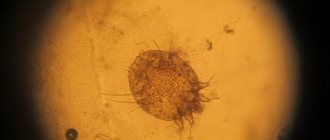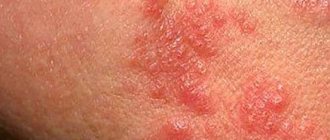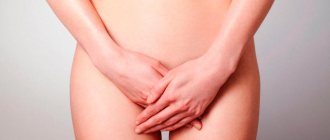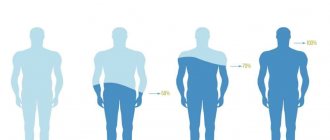Surgery to remove lymph nodes in the groin is most often performed as part of the treatment for vulvar cancer and penile cancer. In addition, other oncological diseases that metastasize to the lymph nodes of this area may be an indication for inguinal lymph node dissection.
- Why do you need to remove lymph nodes?
- Preparing for lymph node removal
- How is the operation performed?
- Possible complications
- Prognosis and clinical effectiveness of inguinal lymph node removal
Why do you need to remove lymph nodes?
The vast majority of malignant tumors metastasize through the lymphogenous route, and this occurs as follows. At a certain stage of development, malignant cells begin to lose contact with the primary tumor. Then, with the flow of tissue fluid (lymph), they enter the lymphatic capillaries, and from there to the nearest lymph nodes. The node that is located first on the path of the tumor is called the sentinel node.
Some of the tumor cells in the lymph nodes die, while the other part overcomes the immune barrier and begins to multiply. Thus, metastasis is formed. It gradually grows, which leads to an increase in the size of the lymph node. For some time, immune cells restrain the development of metastasis and prevent it from spreading further. Depending on the degree of malignancy, this stage can take from several months to several years. Then the cancer cells migrate further into the next lymph collectors and, over time, spread throughout the body.
The purpose of inguinal lymphadenectomy is to remove regional lymph nodes - those that collect most of the lymph from the site where the tumor is located, which means they are most likely to contain cancer cells. This cannot completely prevent the risk of tumor metastasis, but it will reduce the likelihood of its development and also limit the possibility of cancer cells spreading through the lymphatic system. In addition, the removed lymph nodes are necessarily sent for morphological examination, the results of which make it possible to more accurately determine the stage of the tumor and, if necessary, adjust treatment.
Often this operation is of vital importance and is performed in all necessary cases when the patient is able to undergo surgery. But on the other hand, it is associated with a number of serious complications, both in the postoperative and long-term period, even several years after its implementation. Therefore, the scientific and medical community is constantly conducting research aimed at finding the optimal volume of tissue removal.
For example, oncologists can predict which nodes the cancer will go to first; they are called sentinel or sentinel nodes. For some types of tumors, the first step is removal of the sentinel lymph nodes. They are sent to a laboratory and examined for the presence of malignant cells. If the result is negative, then with a high degree of probability other lymph nodes are also not involved in the process, and there is no need to remove them.
In order to identify sentinel lymph nodes, they are mapped. For this purpose, a dye or indicator is injected into the tumor. Most often, this is a radioactive isotope, which allows you to track the path of lymph and determine where the sentinel lymph node is located.
Sentinel lymph node biopsy avoids removal of axillary lymph nodes in 60-65% of patients with stage 2 breast cancer. Previously, such an operation was considered mandatory, which increased the risk of developing lymphedema - elephantiasis or severe swelling of the arm, which in severe cases leads to disability in such patients.
Therapy for regional lymphadenitis
The danger of regional enlargement of nodes is in the absence of obvious pain in the groin. In 80% of cases, there is an enlargement of the lymph nodes without pain. This complicates diagnosis and leads to unintentional delayed treatment. While early detection of diseases that provoke lymphadenitis in the groin significantly increases the chances of treatment without complications.
Enlarged lymph nodes in the groin are treated only comprehensively. Initially, it is necessary to determine the source of the problem - the area of localization of inflammation. Without this (getting rid of the primary disease), treatment of the lymph nodes in the groin will be accompanied by relapses.
Much depends on the degree of increase and form of infection. For non-purulent forms of diseases in the groin, pharmacological therapy (antibiotic ointments/gels or oral administration) in combination with restriction of mobility may be sufficient. If suppuration begins against the background of enlarged lymph nodes, a surgical procedure may be required - opening and cleaning the lesions in the groin.
In some cases, medication and physical therapy for enlarged inguinal lymph nodes may be accompanied by the use of herbal-based drugs (dandelion, peppermint, herbs) in order to enhance the sedative effect in the inguinal lymph nodes.
How is the operation performed?
Inguinal lymphadenectomy may be performed during surgical removal of the primary tumor. Most often, the lymph nodes in this case are removed en bloc along with the malignant neoplasm. Another option is delayed intervention. In this case, removal of lymph nodes is carried out in the second stage, either after additional diagnostic methods (morphological examination of the cutting edges, sentinel lymph node biopsy), or in the long-term period, when the pathology is already progressing.
The procedure itself for removing inguinal lymph nodes can be performed by two methods - open, or traditional, and closed - endoscopic. In an open operation, an extensive tissue incision is made, leaving long scars. During endoscopic intervention, all manipulations are performed through small punctures. This method causes less tissue damage, does not leave large scars, and is also less likely to cause complications such as lymphedema, skin flap necrosis, scrotal or vulvar swelling, and wound infection.
This operation itself is technically very complex and, as a rule, takes longer than removal of the primary lesion. Of course, it requires a highly qualified surgeon.
During the healing stage after removal of the inguinal lymph nodes, constant monitoring of the condition of the wound is necessary. Bandages should be changed according to the doctor's recommendations. At first, it may be necessary to puncture the surgical area to evacuate the accumulated fluid. Gradually, the need for the procedure will disappear.
It is also necessary to ensure that the wound does not become infected. If redness, swelling, swelling, increased pain, unpleasant odor or purulent discharge appear, you should immediately consult a doctor.
After surgery, local numbness of the skin is possible. It develops due to the fact that nerve endings are crossed during the intervention. In some patients, sensitivity is restored over time.
Diagnostics
Women, as a rule, turn to a gynecologist. If necessary, a dermatologist, urologist, and surgeon take part in the examination. During the conversation, the circumstances under which the symptom first arose are established, the dynamics of its development, and its connection with various factors are examined. As part of a general examination, local purulent foci and signs of damage to the gastrointestinal tract, urinary tract and musculoskeletal system are identified.
For folliculitis, dermatoscopy is performed. In patients with local infectious processes, purulent discharge is collected. To clarify the diagnosis, the following procedures are prescribed:
- Gynecological examination.
It is carried out to identify inflammatory and non-inflammatory diseases, tumors of the genital organs. The condition of the vulva, vagina, uterus and appendages is examined, signs of emergency conditions are determined, discharge is taken, and sometimes tissue samples are taken for morphological examination. - Ultrasonography.
Ultrasound of the pelvic organs is informative for gynecological pathologies and CPPS. Ultrasound of the abdominal organs is prescribed for damage to the gastrointestinal tract. For patients with suspected urolithiasis and other urinary tract diseases, ultrasound of the kidneys and ureters and ultrasound of the bladder are recommended. - Radiography.
To examine the condition of the uterus and appendages, hysterosalpingoscopy is performed. Women with diseases of the kidneys, ureters and bladder are referred for excretory urography or cystography. For some diseases of the digestive system, irrigoscopy is performed. Patients with injuries and orthopedic diseases are prescribed x-rays of the hip joint. - Endoscopic studies.
Taking into account the presumed localization of pathological changes that provoke pain, women can undergo hysteroscopy, cystoscopy, urethroscopy and colonoscopy. If acute appendicitis is suspected and other diagnostic procedures are insufficiently informative, laparoscopy is performed. - Lab tests.
The list may include general blood and urine tests; PCR tests to exclude STIs; microscopy of urogenital smear; bacterioscopy of discharge from the genital tract and purulent discharge from skin lesions; cytological examination of smears to identify atypical cells; histological analysis of a biopsy of the lymph node, genitals, anus or urinary tract; stool occult blood test.
Possible complications
Inguinal lymphadenectomy is an unpleasant operation and is accompanied by the risk of developing some complications:
- Lymphorrhea and seromas are accumulations of lymph in the wound. On average, this lasts about 2 weeks, but can last up to 1 month. The accumulation of lymph in the wound is a risk factor for secondary infection and skin necrosis. If the seroma is extensive, it can cause rapid growth of connective tissue and the formation of keloid scars.
- Swelling of the vulva or scrotum.
- Swelling of the legs, up to the development of lymphedema (elephantiasis of the limb). Edema can be local, when, for example, only the foot or hand is affected, or extensive, when the entire limb and tissues of the lower half of the body are involved in the process. Swelling is accompanied by pain and loss of muscle strength.
As part of the treatment of lymphedema, complex therapy is carried out, including compression, drainage massage, a complex of physical therapy and skin care of the affected limb.
In order to prevent or minimize the risks of developing this pathology, it is necessary to strictly adhere to a number of rules:
- Avoid the formation of edema, even minor, on the affected limb. When they form, it is necessary to wear compression stockings.
- You should avoid any manipulations that could lead to a local increase in pressure on the affected limb - standing for a long time, wearing uncomfortable shoes, including dress shoes with heels.
- Carefully ensure that the skin on the feet is not damaged, avoid the formation of calluses, injuries, and maceration. Do not walk barefoot even on the floor at home, etc.
- Sharp temperature fluctuations should be avoided - baths, saunas, swimming pools, etc.
Decoding the results
The results are given to the patient after the procedure. The protocol must reflect the following information about the lymph nodes:
- dimensions, length/width ratio, shape;
- structure of the lymph node, the presence of differentiation into the cortex and medulla;
- extent of lesion/enlargement;
- number of vessels;
- density;
- borders and contours.
Normally, the size of the lymph nodes should not be enlarged, the diameter is about 10 mm. The norm also includes smooth contours, a uniform structure, the absence of growths and any formations.
The importance of inguinal lymph nodes in women
Lymph nodes perform the function of biological filters. Peripheral organs are located in the joint area - in places where lymph flows from different tissues of the body through the vessels of the lymphatic system.
The appearance of organs may differ in shape:
- round;
- oval;
- in the form of a bean;
- rarely in the form of a tape.
Dimensions in normal condition vary between 0.5 - 50 mm. Healthy lymph nodes are pinkish-gray in color. The organs serve as a barrier to the spread of infected and cancer cells in a woman’s body. Their role is the production of T and B lymphocytes, the body’s protective cells involved in the destruction of harmful and toxic elements.
There are two types of inguinal lymph nodes: deep and superficial. A group of superficial nodes located just under the skin can be palpated. Deep lymphoid tissue is located in the muscle layers, along the path of blood vessels, close to the pelvic organs.
What indicates the appearance of inguinal lymphadenitis
- Unpleasant sensations, pain on the inner thigh. Pain may radiate to the stomach. They are characterized by high intensity.
- Enlargement of the lymph node due to its inflammation. It can often be detected by palpation.
- General intoxication . These are lethargy, migraines, increased body temperature, weakened immunity and health.
- Change in skin color in the groin area . In case of suppuration, the skin may acquire red or burgundy shades.
Symptoms of lymphadenopathy
Enlarged lymph nodes can be of various sizes, from barely visible to noticeable to the naked eye. Palpation may cause pain. Sometimes there is redness of the skin over enlarged lymph nodes.
A pediatrician in Makhachkala can identify the development of lymphadenopathy in a child by a number of external signs, including:
- causeless weight loss;
- increase in temperature;
- increased sweating at night;
- weakness;
- attacks of fever;
- enlarged liver and spleen (on palpation);
- heart rhythm disturbances;
- frequent infectious diseases of the upper respiratory tract.
Use of medications
If traditional methods of treatment are not credible, then you need to turn to medications. In order to treat lymph nodes in the groin in women, two types of medications are used - internal and external use:
Pustular wounds, if they appear. lubricated with Levomekol ointment
- antibiotics: Amoxicillin, Amoxiclav, Dimexide, Tsiprolet, Azithromycin, Tsifran, Biseptol;
- tablets having antibacterial and bactericidal properties: Siflox, Vilprafen, Sumetrolim, Solexin-forte, Streptocida, Septrin;
- ointments : Levomekol, Vishnevsky ointment, ichthyol ointment.
Where are the inguinal lymph nodes located?
Inguinal lymph nodes in women (they are located not one at a time, but in groups) are located in the upper parts of the hip joint, going down to the lower abdomen along the path of the inguinal fold. Superficial organs are located in the tissue under the skin, deep organs are located under the fascia (the protective connective membrane covering the muscles) near the femoral blood vessels.
Close to the inguinal lymph nodes are the reproductive organs and the genitourinary system:
- uterus;
- ovaries;
- bladder;
- external genitalia;
- rectum.
The area where the inguinal lymph nodes are located also includes the lower limbs, buttock and lumbosacral back.
How to treat lymph nodes in the groin using traditional methods
There are several well-known folk methods for treating inflamed lymph nodes in the groin:
- compresses;
- baths;
- the use of herbal infusions.
For compresses, use fresh mint leaves, dandelion juice, as well as herbal preparations of oregano, yarrow and walnut leaves.
Dandelion juice compresses
Dandelions must be collected immediately before preparing the compress, as they quickly wither and lose their beneficial properties for treating lymph nodes. The leaves and stems of the flower must first be washed under running water, then placed in gauze and squeezed out the juice.
After dandelion juice, soak a cloth made of natural fibers (you can use gauze or cotton wool) and immediately apply it to the affected area. This should be kept for at least 2 hours and preferably done 2 times a day for a week.
Mint leaf compresses
To prepare a compress from mint leaves, use fresh leaves. The leaves must be passed through a blender until porridge-like. Then the resulting mass is carefully wrapped in gauze and applied to the inflamed lymph nodes for 2 hours throughout the week. You can fix this compress.
Herbal mixture of oregano, yarrow and walnut leaves
It is good to use to relieve inflammation of the lymph nodes in the groin in women using a herbal mixture of oregano, bitter yarrow and walnut leaves (it is better to use hazelnut leaves). Take 2 spoons of herbal mixture in equal proportions and boil for no more than 10 minutes in 400 ml of water.
Afterwards, this decoction must be left for 1 hour and then strained. For compresses, use gauze or cotton wool, which is moistened in a decoction and applied to areas of inflammation for 1 hour. Herbal compresses must be done for 10 days.
Baths for the treatment of enlarged lymph nodes in the groin are the best natural medicine for women.
Chamomile baths
To prepare this procedure, use a strong decoction of chamomile flowers (1 tablespoon of herb per glass of water). The strained infusion is poured into a bowl of warm water. You need to take a bath for about 10-20 minutes with your lower body until the water is partially cooled.
Herbal infusions (teas)
Herbal infusions are ideal for relieving inflammation of the lymph nodes. In folk medicine, hazel, echinacea, nettle, blueberry, wormwood, mint, meadowsweet, linden blossom, oregano, St. John's wort and dandelion roots are widely used.
Hazel infusion
To prepare this infusion, you need to take 2 tablespoons of hazel bark and leaves and pour 0.5 liters of boiling water. Leave for 1 hour. Then strain and take a quarter glass 3 times a day an hour before meals.
Herbal tea
Herbal teas may consist of hazel, echinacea, nettle, blueberry, wormwood, mint, meadowsweet, linden blossom, oregano, St. John's wort, and dandelion roots. To brew tea, you can use only one of the herbs listed, or you can use them in combination. For 1 liter of boiling water add 2 tbsp. spoons of herbal mixture. Leave for about an hour and drink throughout the day.











